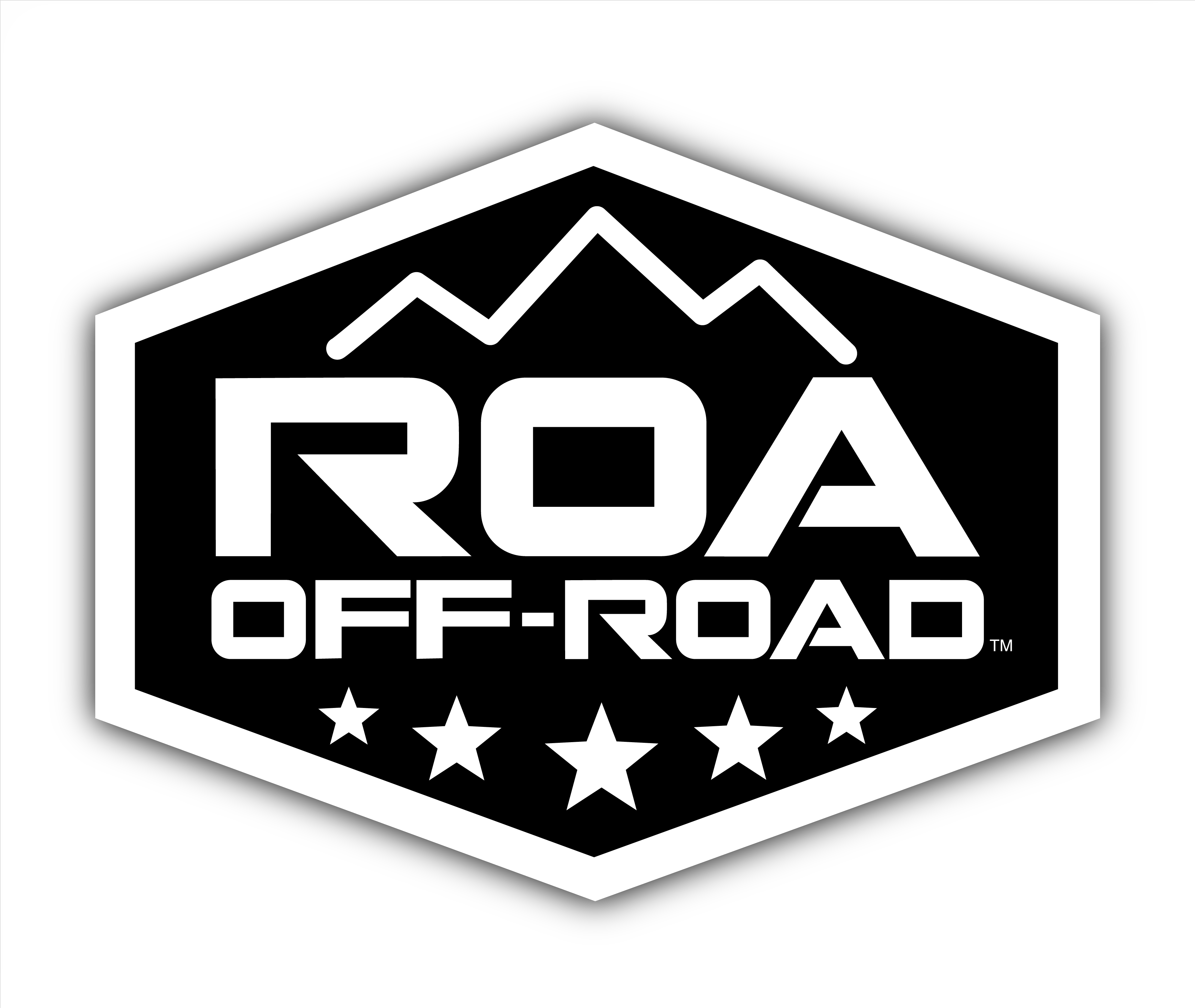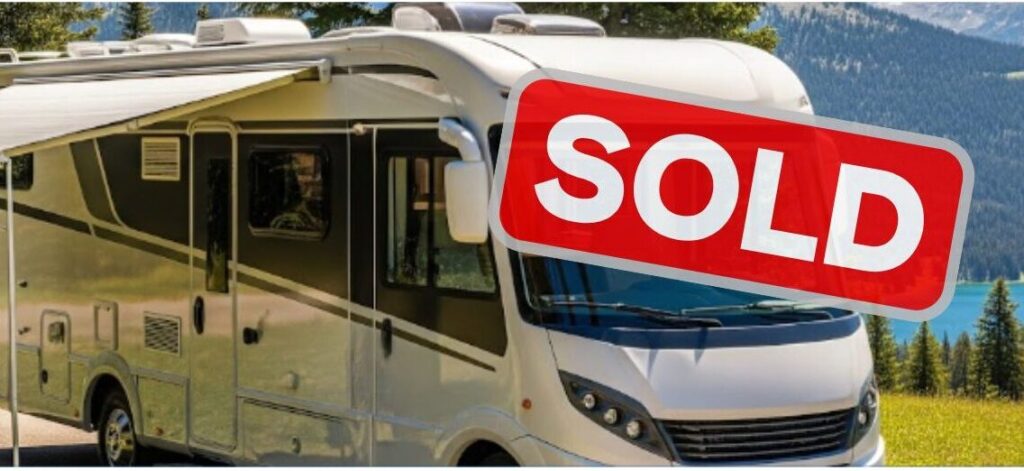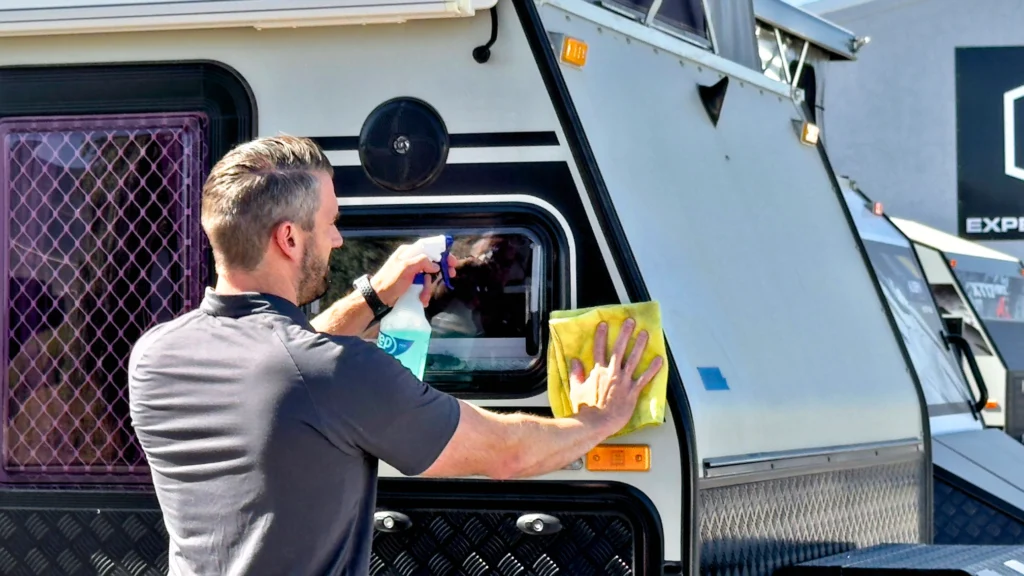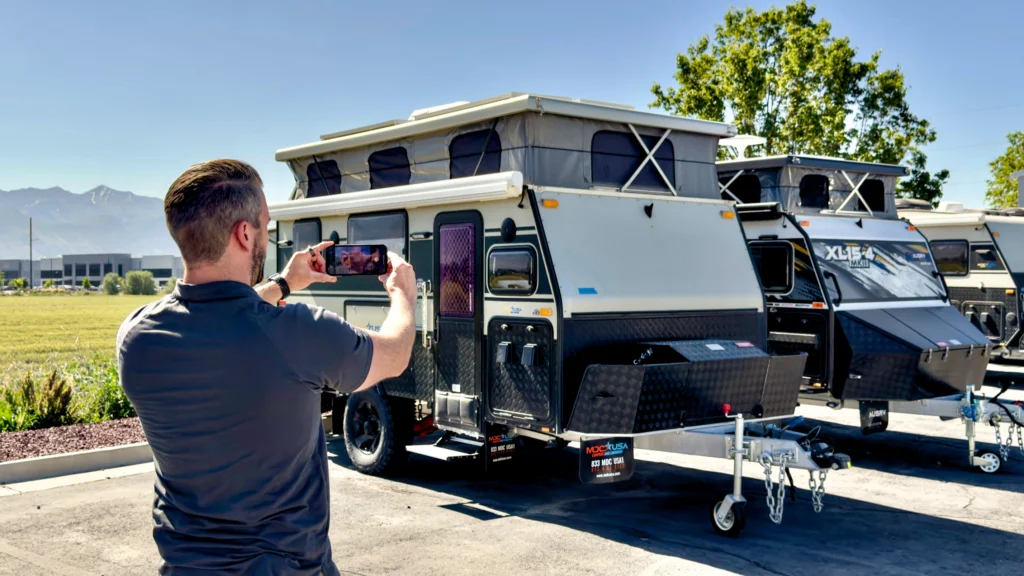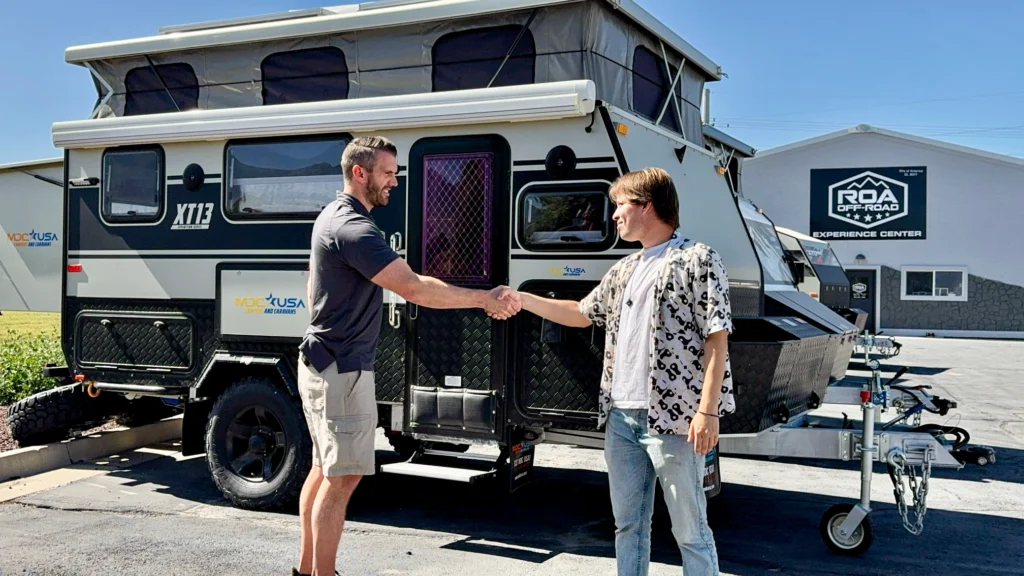Best way to sell your RV or Off-grid trailer and make the most profit.
Selling your RV privately can be a fantastic way to maximize your profit and have more control over the sales process. While it requires a bit more effort than trading it in, the financial rewards can be significant. This guide will walk you through the essential steps to successfully sell your RV yourself, from preparing your unit to listing it effectively on popular platforms.
Your Guide to Selling Your RV or Off-grid trailer Privately:
1. Prepare Your RV for Sale: First Impressions Matter!
Making your RV shine will attract more buyers and potentially higher offers. Think of it like staging a home -you want to present it in its best possible light.
- Deep Cleaning: This is crucial! Buyers want to see a well-maintained and clean RV.
- Exterior: Wash and wax the exterior thoroughly. Clean windows, tires, and rims. Remove any dirt, grime, or streaks. Consider polishing the exterior for a more appealing look.
- Interior: Vacuum and shampoo carpets, wipe down all surfaces (counters, cabinets, walls), clean the bathroom and kitchen areas, and empty all waste tanks. Clean all appliances, including the refrigerator, oven, and microwave.
- Odor Removal: Eliminate any lingering odors. Air out the RV, use odor absorbers, and consider having it professionally cleaned if there are persistent smells.
- Declutter and Depersonalize: Remove all personal items, excess clutter, and anything that makes the RV look lived-in. Buyers need to envision themselves owning the unit. Store away tools, extra linens, and personal decorations.
- Minor Repairs and Maintenance: Address any small issues that could deter a buyer or lead to price negotiations.
- Check all lights (interior and exterior), faucets, and appliances to ensure they are in working order.
- Top off all fluids and ensure the engine (if applicable) is clean.
- Fix any leaky seals or minor cosmetic imperfections.
- Ensure tires are properly inflated and have good tread.
- Gather all maintenance records and manuals to show potential buyers.
- Staging Your Unit: Once clean and decluttered, strategically arrange items to showcase the RV’s features and space.
- Make beds neatly.
- Arrange seating areas to look inviting.
- Add a few tasteful, neutral decorative touches, such as a small plant or a throw blanket, to make the space feel welcoming.
- Ensure all blinds and curtains are open to let in natural light.
2. Master the Art of RV Photography
High-quality photos are your most powerful selling tool. They are often the first thing a buyer sees and can make or break their interest.
- Lighting is Key: Shoot during daylight hours, preferably on a bright but overcast day to avoid harsh shadows. If shooting indoors, open all blinds and turn on all lights.
- Clean and Clear Backgrounds: Ensure there’s no clutter in the background of your photos.
- Variety of Angles:
- Exterior: Take multiple shots from different angles (front, back, sides, diagonal views). Include a shot of the roof if possible (from a safe distance). Show the awning extended.
- Interior: Capture wide shots of each room (kitchen, living area, bedroom, bathroom). Also, take close-ups of desirable features like special appliances, unique storage solutions, or upgraded finishes.
- Detail Shots: Include photos of the dashboard, mileage, tire tread, storage compartments, and any unique features.
- Showcase Functionality: If possible, show an appliance in use (e.g., stovetop burner lit, TV on).
- High Resolution: Use a good camera or smartphone with a high-resolution setting. Avoid blurry or pixelated images.
- No Personal Items: Double-check that no personal items or people are visible in the photos.
- Take Many Photos: The more good photos you have, the better. Aim for at least 20-30 diverse images.
3. Craft a Compelling Listing Description
Your description should be informative, engaging, and highlight the best aspects of your RV.
- Start with a Catchy Title: Something that grabs attention and includes key details (e.g., “2020 Keystone Cougar Half-Ton Fifth Wheel – Excellent Condition!”).
- Key Details First: Immediately provide essential information: year, make, model, mileage (if applicable), length, and type of RV (e.g., travel trailer, Class A motorhome, fifth wheel).
- Highlight Unique Features: What makes your RV special? Is it a rare floor plan, recent upgrades, or unique amenities?
- Describe Condition Accurately: Be honest about any flaws, but emphasize the positive aspects. Mention recent maintenance or repairs.
- List Amenities: Detail all the features, from appliances and entertainment systems to sleeping capacity and storage.
- Maintenance History: Mention that you have detailed maintenance records available.
- “Why You’re Selling”: Briefly and positively explain your reason for selling (e.g., “upgrading to a larger RV,” “no longer able to travel as much”).
- Pricing and Contact Information: Clearly state your asking price and how potential buyers can contact you (phone number, email). Indicate if the price is firm or negotiable.
- Call to Action: Encourage inquiries and test drives/walkthroughs.
4. Choose Your Selling Platforms Wisely
Different platforms cater to different audiences. Listing on multiple platforms will broaden your reach.
Classified Listings (e.g., Craigslist, Local Classifieds)
- Pros: Often free or low-cost, reaches a local audience.
- Cons: Can attract scammers, requires more vigilance.
- Tips:
- Be Descriptive: Include all the details from your compelling listing description.
- Upload Plenty of Photos: Quality photos are essential here.
- Beware of Scams: Be cautious of suspicious emails or texts. Never give out personal financial information. Insist on meeting in person for viewings.
- Set a Meeting Spot: For initial viewings, consider meeting in a public place if possible, or have someone with you at your home.
Facebook Marketplace
- Pros: Huge user base, easy to share, local focus, direct messaging.
- Cons: Can receive many low-ball offers or tire-kickers.
- Tips:
- High-Quality Photos: Crucial for standing out in the feed.
- Detailed Description: Use the full capacity of the description box.
- Respond Promptly: Be responsive to inquiries.
- Utilize Groups: Share your listing in relevant RV enthusiast Facebook groups.
- Public Profile Check: Be aware that potential buyers can see your public Facebook profile.
*Pro Tip: Boost listings on weekends or prime days.
RV Trader
- Pros: Dedicated RV buyers, national reach, offers various listing packages.
- Cons: Paid service, can be more expensive than other options.
- Tips:
- Invest in a Good Listing: Since you’re paying, make sure your listing is top-notch with excellent photos and a comprehensive description.
- Utilize Premium Features: If offered, consider paid upgrades for better visibility.
- Targeted Audience: Buyers on RV Trader are generally more serious and knowledgeable.
- *Pro Tip: you can pay to feature or get premium listings as you like
5. Handling Inquiries and Viewings
- Be Prepared: Know your RV inside and out. Be ready to answer questions about its history, features, and any work done.
- Safety First: When meeting potential buyers, especially at your home, have a friend or family member with you.
- Flexible Scheduling: Try to accommodate reasonable viewing times.
- Show Everything: Don’t try to hide any imperfections. Being transparent builds trust.
- Test Drives/Walkthroughs: If it’s a motorhome, allow a supervised test drive with valid insurance. For towables, offer to hook it up for a brief demonstration of lights and brakes if the buyer has a suitable vehicle.
- No Pressure Sales: Allow buyers to take their time inspecting the RV. Be helpful and informative, but avoid being pushy.
6. Negotiating and Closing the Deal
- Research Market Value: Before listing, know what comparable RVs are selling for. This will help you set a realistic price and negotiate effectively. If using RVtrader.com you can see the market value of similar units.
-
- You can also read our blog on determining the value of your RV HERE.
- Be Patient, But Firm: Don’t jump at the first low offer. Be willing to negotiate, but know your bottom line.
- Consider a Deposit: If a buyer is serious, ask for a non-refundable deposit to hold the RV (with a written agreement).
- Payment Method: For the final payment, insist on a secure method like a cashier’s check from a reputable bank (verify it with the bank before releasing the RV) or a wire transfer. Avoid personal checks or cash for large sums.
- Paperwork: Bill of Sale: Create a detailed bill of sale that includes the RV’s VIN, make, model, year
We’ve created a simple RV Listing Checklist for you to sell your RV quick and profitably. Submit the form below to have the checklist sent to your email.
